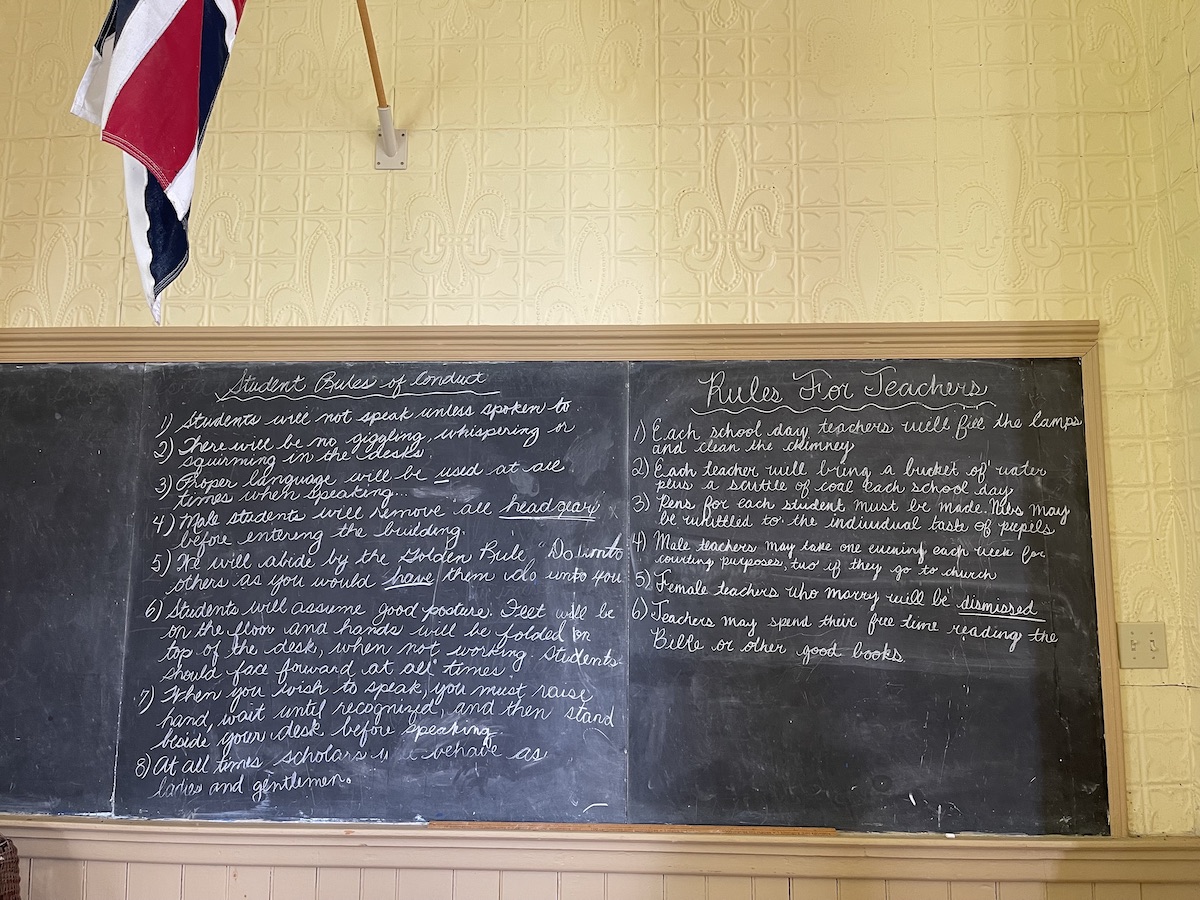Known for her family connections to the area, Shannon Prince is filled with knowledge and stories related to Black history in Chatham-Kent.
She’s the Curator of the Buxton National Historic Site and Museum, and her husband Bryan is a historian and board member.
“I’m a sixth- generation descendant from the settlement. I’m deeply rooted to the community,” she explains.
The Buxton National Historic Site dates back to 1849, when Reverend William King brought fifteen formerly enslaved people from Louisiana to freedom in Canada. He established the Elgin Settlement at Buxton—a self-sufficient Black community at the end of the Underground Railroad. He purchased 9,000 acres to create a haven for freedom seekers, and today it’s known as the Buxton National Historic Site.
Today, descendants of the original settlers—including Shannon—are dedicated to preserving their rich heritage and history.

Shannon giving a tour of the Colbert-Henderson Cabin, demonstrating how sugar and flour were stored.
Tracing Back History
Shannon says they’ve had visitors from across Canada, the United States, New Zealand, Australia, worldwide.
“There’s a lot of Black history in Chatham-Kent. Much of it has not been widely known, but it’s coming to the surface, especially in light of what has happened in the past few years, like with George Floyd and Black Lives Matter. A lot of people are taking stock of who they are and what they are,” she explains.
That curiosity is happening locally, too.
“We have the museum in North Buxton and the museums in Chatham and Dresden. We’re surrounded by this history, but sometimes people are oblivious to it or don’t want to hear it. It took this many years for people to take notice, to have that wake-up call,” Shannon says.
Many visitors are also looking to find information about their ancestors, thanks to the museum’s books, documents, and records.
Exploring the Museum Grounds
Part of Shannon’s role at the museum is giving tours, starting with the outside of the building.
The front of the museum features a bell with a plaque that reads:
The Buxton Liberty Bell was a gift in 1850 from the coloured inhabitants of Pittsburgh to Rev. William King and the coloured settlers at Raleigh, Canada West. The original bell now hangs in the steeple of St. Andrews Church South Buxton. It is said that the Buxton Liberty Bell rang out each time a fugitive reached safety in Buxton. This replica is dedicated to the courage and to the accomplishments of our ancestors who made Buxton their home.
Inside the museum are many artifacts that help tell the story of the thousands of freedom seekers fleeing captivity in the 1850s.
Next to the museum is a log cabin.
“The Colbert-Henderson Cabin was built in 1852 in one day. We had to replace the foundation because it was sitting on four great big boulders. It’s all 1852 black ash. The family lived here from 1852 until 1986,” Shannon explains.
The stove and the fireplace heated the cabin.
A short walk away is the schoolhouse, which was built in 1861.
“There were separate entrances for boys, girls, and the teacher,” Shannon says.

At the back of the room is the boys’ entrance on the left, the teacher’s entrance in the centre, and the girls’ entrance on the right.
“All the schools here were integrated as opposed to segregated. The photo in the back of the room was taken in 1910, and that’s my favourite photo,” Shannon says.

A photo from 1910 showing the students who attended the school at the time. Behind the photo is the original tin with a Fleur-de-lis pattern.
“The tin is all from 1861. It has the Fleur-de-lis, but we’re not sure why since we’re under the British Crown. But Reverend King makes note in his diary that he ordered the tin for the school, the shed, and the church, but that’s about all he says,” she explains.
“There were rules for the teachers and students in 1861. You can see that for teachers, male teachers had one evening off each week for courting purposes and two if they went to church. But female teachers may spend their free time reading the Bible or other good books,” Shannon explains.
“Grades 1 to 10 were in here, so you had about a hundred students in here at a time. You can see that the desks start small and then get bigger,” she says.
“The school had two rooms when I went here. One room was for grades 1 to 4, and the other for grades 5 to 8. Each room had its own oil stove then. We still used outhouses for recess back then as well. My husband and I, and our parents and grandparents all went to this school,” she says.
Keeping Memories Alive
Having grown up in the house across the street from the museum, Shannon has been surrounded by her own family history her entire life.
“I think that’s one of the nice things about the community because there are so many amazing stories and unknown stories that people are able to share and have that connection to their history,” she says.
She says it’s important to keep documenting and recording family stories for future descendants.
“Ask your parents and grandparents about their experiences growing up and living and working in the area. We have cell phones now, so it’s easy to record what they’re saying so you can keep their memories and stories alive,” she says.
Shannon recently received the Thomas Symons Award for Commitment to Conservation in recognition of her work to preserve Black history. She was also given an honourary Doctor of Laws degree from the University of Windsor.
To learn more, visit the Buxton Museum’s website by clicking here.








